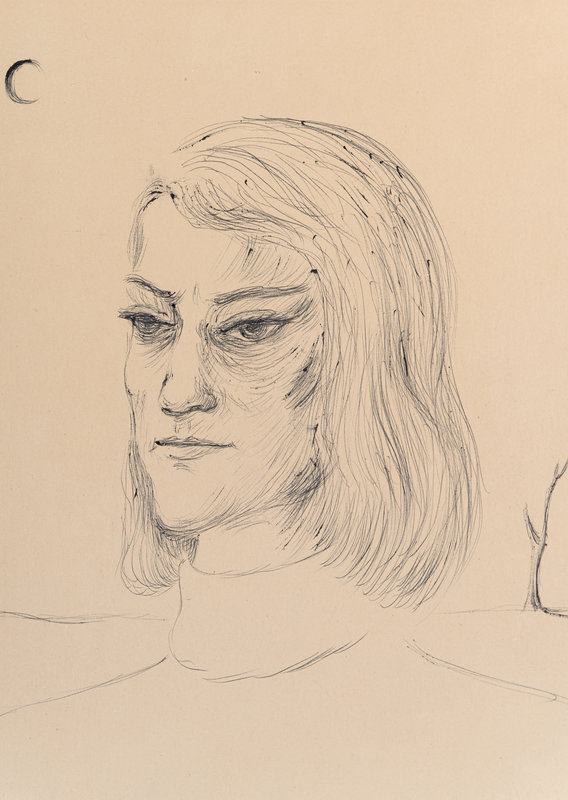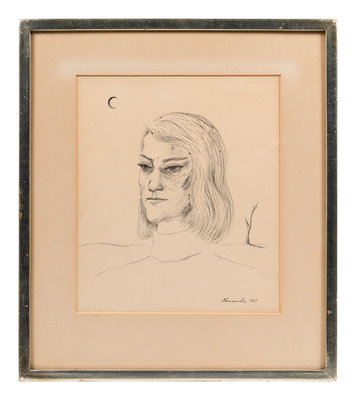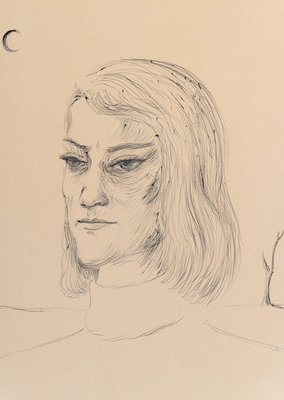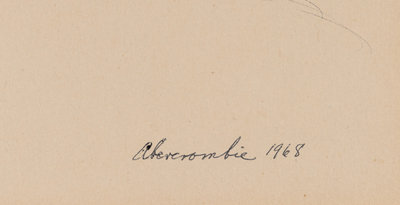Condition Report
Contact Information
Auction Specialist
Lot 48
Lot Description
We are grateful for the research conducted by Susan Weininger, Professor Emerita, Roosevelt University.
Provenance:The Artist
Hugh Cameron, gift of the Artist, Benton Harbor, Michigan
Thence by descent to the present owner
Exhibited:
Chicago, Illinois, Hyde Park Art Center, Gertrude Abercrombie, A Retrospective Exhibition, January 28 - March 5, 1977, no. 91
Lot Essay:
A Self Portrait of Myself
Abercrombie’s late pen and ink Self Portrait, 1968, is the last in a long line of images of herself done by the artist. She painted herself often and in various guises from her earliest known work, a 1929 image in the guise of Greta Garbo (location unknown); to the young, sweet woman in a watercolor of c. 1932 (Private Collection); to the Picasso-esque Self Portrait in Green (1938, Illinois State Museum); to the enigmatic Self Portrait of My Sister (1941, Art Institute of Chicago); to a very stern Self Portrait (1951, location unknown). In addition to these and numerous other self-portraits done throughout Abercrombie’s career, there are all the compositions in which she figures as a component, whether in a landscape, an interior space, or in some combination of the two. In one of her latest known works, For Once in My Life (1969, location unknown) her nude body is partially enclosed in a huge shell on a barren beach, combining two of the interior and exterior spaces that she painted throughout her career. The artist said, “It is always myself that I paint,” and this is borne out in a survey of her work.
The representation of Abercrombie’s features in this Self Portrait are close to those in her portrayals of three decades earlier, such as Self Portrait of My Sister. Even though she appears in photographs from the 1960s with age-appropriate wrinkles, filled out facial features, and sagging chin, she returns to an idealized youth in the present image. The sensitive pen strokes indicate that she may have a few wrinkles, but otherwise her skin appears taut and with the chiseled chin, long neck, and slim, strong shoulders so characteristic of her appearance in early portraits. Is this the way the artist saw herself or imagined herself at 59 years old? Even if she had not been experiencing the accelerated aging caused by a lifelong abuse of alcohol and the various physical ailments that beset her at this time of her life, the normal effects of growing older would have been visible. This drawing is consistent with the simplification and idealization characteristic of all the representations of herself.
Balancing the large portrait head on either side are a barren tree and a dark crescent moon seen against the white of the paper. These simple, emblematic details, personal symbols that Abercrombie used in her work repeatedly, enhance the image as well as alluding to the loneliness that afflicted her all her life. Executed late in the artist’s productive life and given to Hugh Cameron, a close friend, this drawing is a personal statement. The delicate pen and ink work provides a penetrating character study of a perpetually fascinating individual and is characteristic of Abercrombie’s ability to make compelling and revealing images from the most basic materials in the most efficient way.















